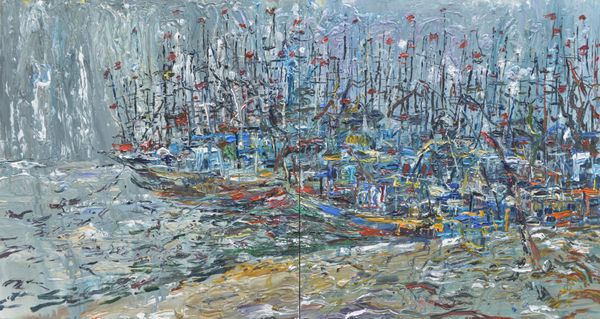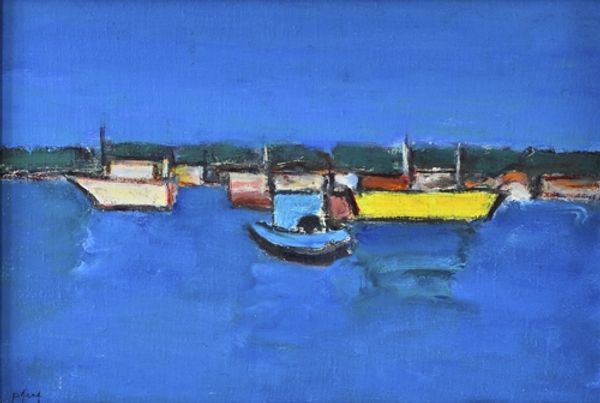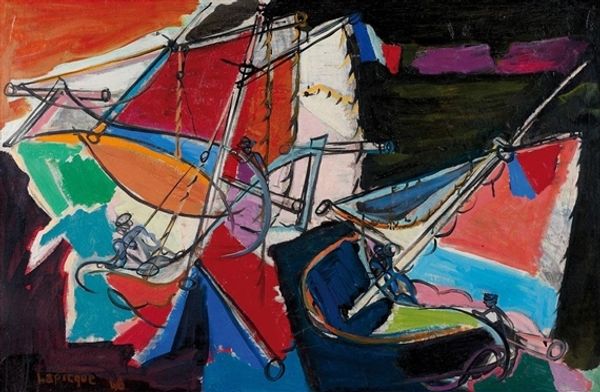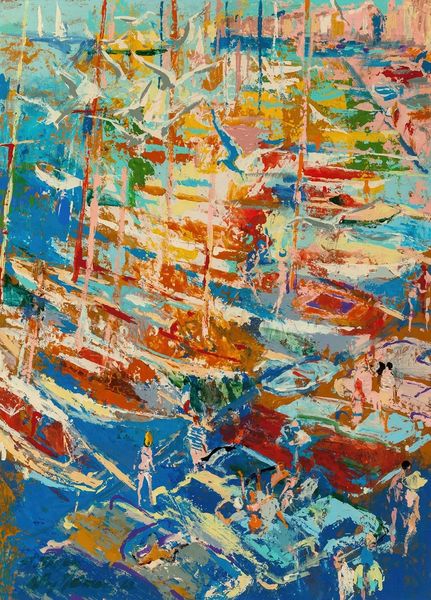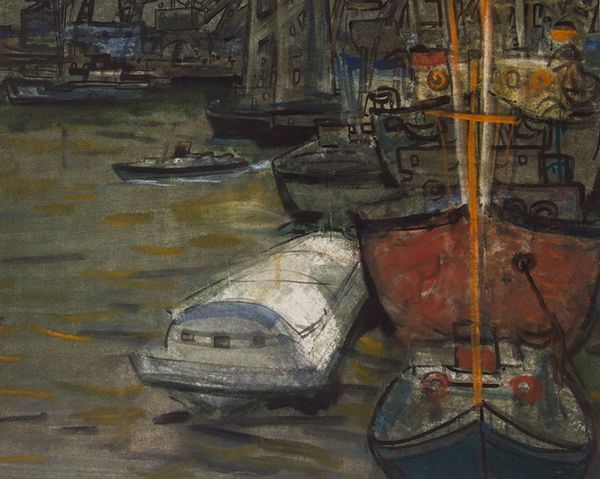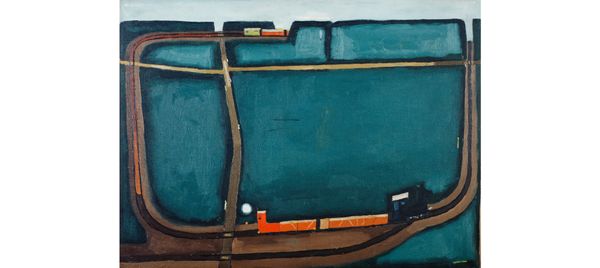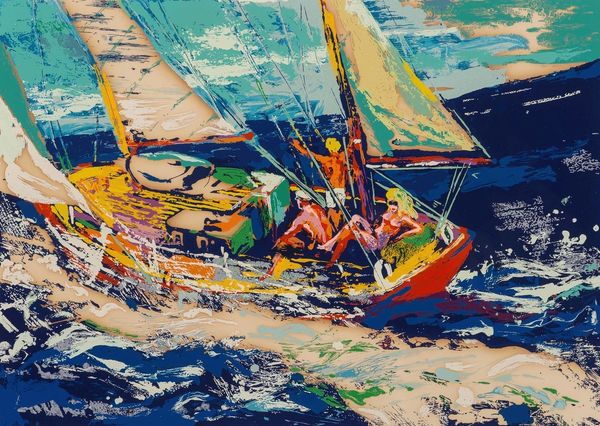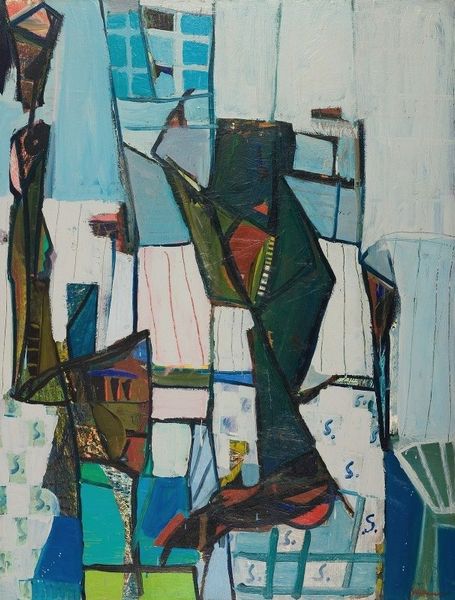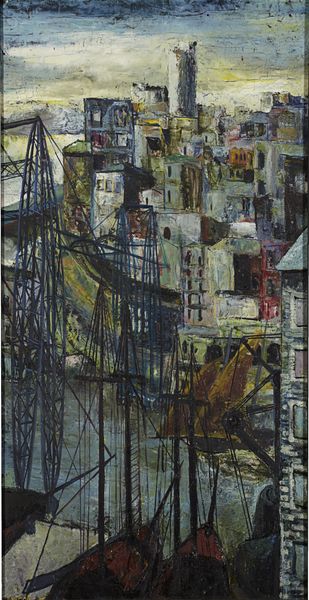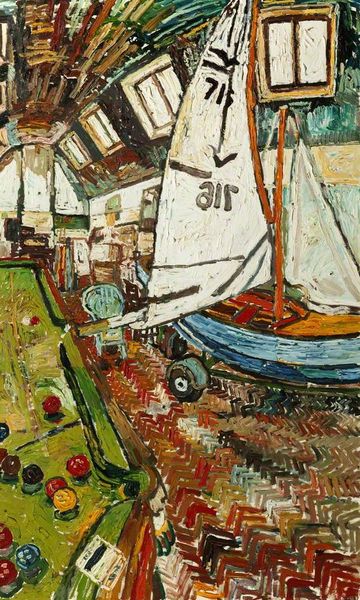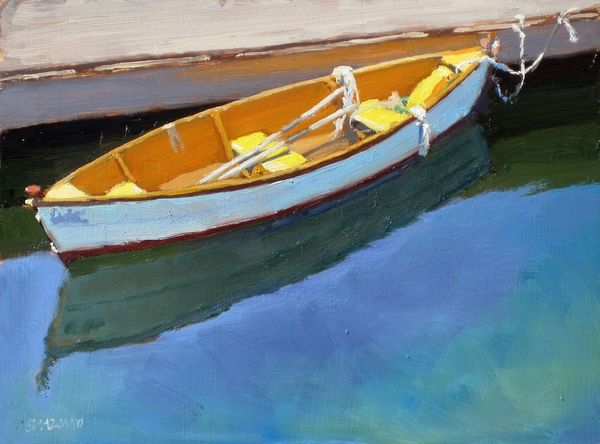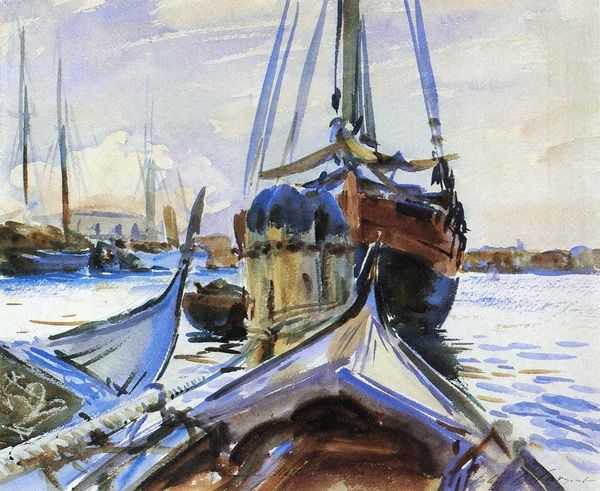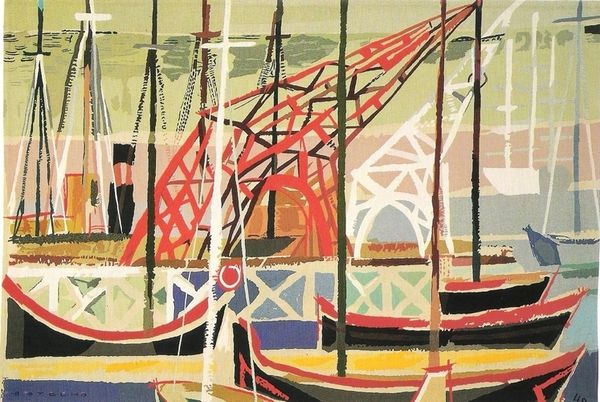
painting, oil-paint
#
abstract painting
#
painting
#
graffiti art
#
oil-paint
#
figuration
#
oil painting
#
realism
Copyright: Modern Artists: Artvee
Curator: Timur Akhriev’s “Work Zone” presents us with an intriguing view. There isn't an explicit date of creation available, leaving room to consider its connection to contemporary artistic movements, but before delving in that I wonder your impressions when taking it in. Editor: My immediate sense is one of tactile confusion – I'm surrounded by rigging! The textures implied through the oil paint application make me think about how rough ropes would feel against hands and the physical labor that necessitates. The composition is overwhelmingly built upon layering of materials. Curator: Indeed! The lack of a clear creation date for "Work Zone" invites discussion about how we contextualize the artist's socio-political intentions. Timur is working firmly within the tradition of realism while employing the vocabulary of the graffiti art. So what does that mean, and who is it for? Editor: From a materialist lens, the choice of oil paint here seems significant. The medium itself has a rich history tied to European mastery and artistic labor; consider the means of production. The image offers textures, but also a history we might examine to broaden what labour and materials might signify. Curator: It’s compelling how the title can suggest an ambiguous social critique. If the 'zone' indicates labor and its output, that shifts attention to the politics of the port. Editor: It’s not romantic, right? The focus is on what allows travel rather than a destination itself. You wonder about the labor, conditions, the actual means... This is labor’s place and stuff. Curator: Certainly not overtly romantic, which echoes the social realism promoted by Union of Russian Artists, showing that its production echoes this period with the artistic production aimed at celebrating labor’s worth, its tools… Editor: Yes, and for the time, this "realism" does move beyond some forms of glorification to focus instead on what feels immediate. The artist wants you to grapple the textures rather than swoon. Curator: Timur does more than that, reflecting and questioning the social environment shaping creativity, reflecting themes of labor and societal infrastructure. The value lies in understanding the visual narratives as social constructions. Editor: Right, I will not soon look at an abstract space filled with color the same; I will keep thinking of process first, which helps appreciate form. Curator: By considering Timur’s depiction of this port infrastructure we become sensitized to the undercurrents of our world.
Comments
No comments
Be the first to comment and join the conversation on the ultimate creative platform.
